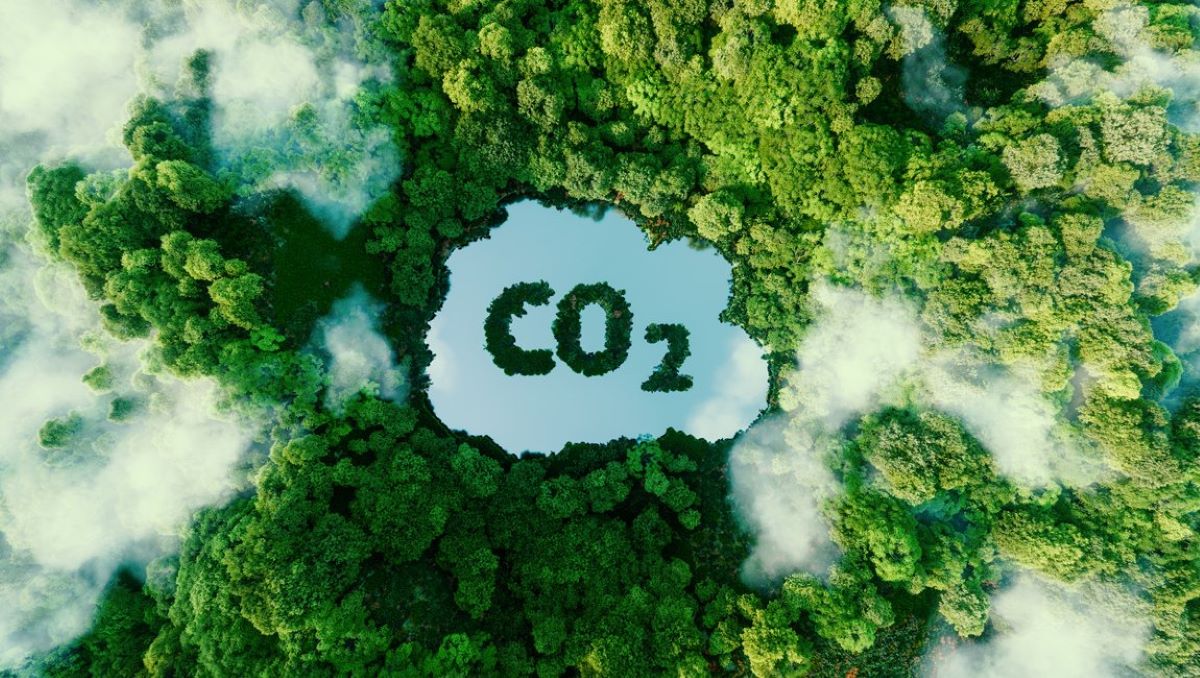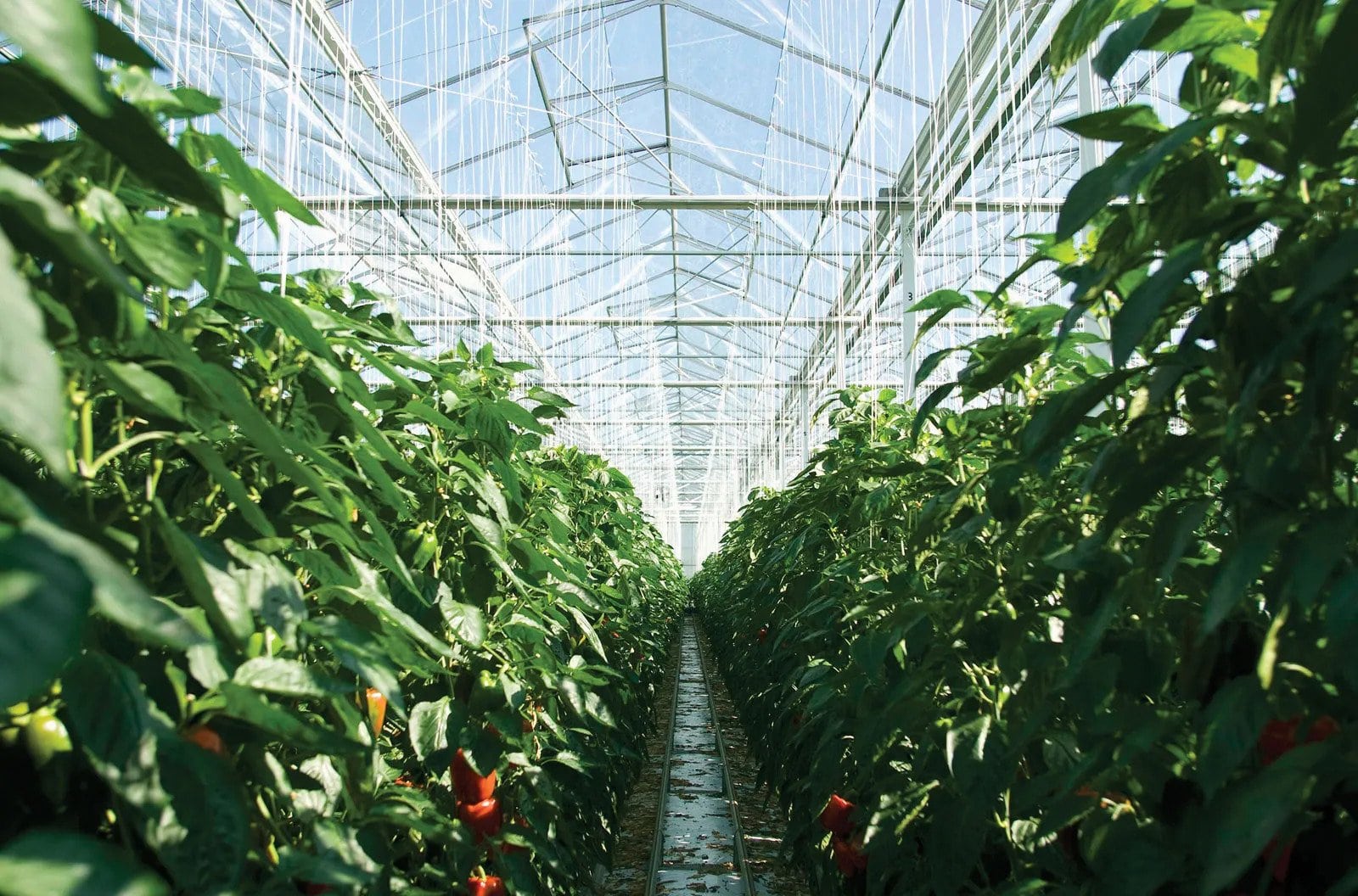Home>Gardening News and Trends>What Is A Runaway Greenhouse Effect


Gardening News and Trends
What Is A Runaway Greenhouse Effect
Modified: January 22, 2024
Stay updated with the latest news on the runaway greenhouse effect. Learn what it is and its potential impacts on our planet in this informative article.
(Many of the links in this article redirect to a specific reviewed product. Your purchase of these products through affiliate links helps to generate commission for Chicagolandgardening.com, at no extra cost. Learn more)
Table of Contents
- Introduction
- Definition of the Greenhouse Effect
- Causes of the Greenhouse Effect
- Runaway Greenhouse Effect Explained
- Historical Examples of the Runaway Greenhouse Effect
- Potential Impacts of a Runaway Greenhouse Effect
- Current Research and Scientific Understanding
- Mitigation and Solutions for the Runaway Greenhouse Effect
- Conclusion
Introduction
The runaway greenhouse effect is a phenomenon that has been the subject of much scientific study and concern in recent years. It refers to a scenario in which the warming of the Earth’s atmosphere reaches a tipping point, causing a self-reinforcing cycle of increased greenhouse gas emissions, which in turn lead to further temperature increases. The result is a rapid and uncontrollable rise in global temperatures, with devastating consequences for the Earth’s climate and ecosystems.
Understanding the runaway greenhouse effect requires an understanding of the greenhouse effect itself. The greenhouse effect is a natural process in which certain gases in the Earth’s atmosphere, such as carbon dioxide (CO2) and methane (CH4), trap heat from the sun and prevent it from escaping back into space. This is essential for maintaining a habitable climate on Earth, as without it, the average temperature would be far too cold for life as we know it to exist.
However, human activities, such as the burning of fossil fuels and deforestation, have significantly increased the concentrations of greenhouse gases in the atmosphere. This has led to an enhanced greenhouse effect, causing the Earth’s temperature to rise at an alarming rate. If left unchecked, this could eventually lead to a runaway greenhouse effect.
The potential consequences of a runaway greenhouse effect are dire. The increased temperatures would lead to the melting of polar ice caps, causing sea levels to rise and inundating coastal areas. Extreme weather events, such as hurricanes and droughts, would become more frequent and severe. The delicate balance of ecosystems would be disrupted, leading to the extinction of many plant and animal species.
Scientists have studied past events in Earth’s history to gain insights into the potential for a runaway greenhouse effect. One such example is the Paleocene-Eocene Thermal Maximum (PETM), a period around 55 million years ago when global temperatures rose by several degrees Celsius in a relatively short period of time. The cause of the PETM is believed to be a massive release of greenhouse gases, possibly from volcanic activity, which triggered the runaway greenhouse effect.
While the situation may seem bleak, there is ongoing research and a growing understanding of the runaway greenhouse effect. Scientists are working to develop models and simulations to better predict the potential impacts and identify potential mitigation strategies.
In the following sections, we will delve deeper into the causes, historical examples, potential impacts, and current research surrounding the runaway greenhouse effect. We will also explore potential solutions and mitigation strategies that can help prevent or reduce the severity of this catastrophic phenomenon.
Definition of the Greenhouse Effect
The greenhouse effect is a natural process that is vital for sustaining life on Earth. It refers to the trapping of heat in the Earth’s atmosphere by certain gases, known as greenhouse gases, which act like a blanket, keeping the planet warm. Without the greenhouse effect, the average temperature on Earth would be much colder, making it uninhabitable for most forms of life.
The greenhouse effect works by allowing sunlight to penetrate the Earth’s atmosphere and reach the surface. As the sun’s energy reaches the Earth, some of it is absorbed by the surface and converted into heat. This heat is then radiated back towards space as infrared radiation. However, certain greenhouse gases, such as carbon dioxide (CO2), methane (CH4), and water vapor, absorb and trap a portion of this outgoing radiation, preventing it from escaping into space.
This trapped heat warms the atmosphere, the land, and the oceans, creating a stable and habitable climate for life on Earth. The greenhouse effect is a natural and necessary process that has been occurring for millions of years. It helps to maintain a relatively stable temperature range, enabling the existence of diverse ecosystems and supporting human civilization.
Human activities, primarily the burning of fossil fuels, deforestation, and industrial processes, have significantly increased the concentration of greenhouse gases in the atmosphere. This has enhanced the natural greenhouse effect and led to a phenomenon known as global warming.
The enhanced greenhouse effect is a result of the increased levels of greenhouse gases trapping more heat in the atmosphere, causing a rise in global temperatures. This is of great concern as it has numerous negative impacts on the Earth’s climate and ecosystems. The scientific consensus is that human activities are the primary drivers of this enhanced greenhouse effect, resulting in the current climate crisis.
It is important to note that the greenhouse effect itself is not inherently bad or harmful. It is a natural process that is necessary for maintaining a habitable planet. However, the problem arises when these natural processes are disrupted and intensified due to human activities, leading to accelerated global warming and climate change.
In the next sections, we will explore the causes of the greenhouse effect, as well as the concept of the runaway greenhouse effect, which represents a critical tipping point in the Earth’s climate system.
Causes of the Greenhouse Effect
The greenhouse effect is primarily caused by the presence of certain gases in the Earth’s atmosphere, known as greenhouse gases. These gases absorb and trap heat from the sun, preventing it from escaping back into space. The main greenhouse gases include carbon dioxide (CO2), methane (CH4), nitrous oxide (N2O), and fluorinated gases.
The burning of fossil fuels, such as coal, oil, and natural gas, is one of the major contributors to the increase in greenhouse gas emissions. When these fossil fuels are burned for energy production, carbon dioxide is released into the atmosphere. Deforestation and land-use changes also contribute to greenhouse gas emissions, as trees absorb carbon dioxide as part of their natural processes. When forests are cleared or burned, this carbon dioxide is released back into the atmosphere.
Methane is another potent greenhouse gas that is released from various sources. It is produced during the production and transport of coal, oil, and natural gas. Livestock farming, particularly cattle, is a significant source of methane emissions due to the animals’ digestive process. Additionally, methane is emitted from waste management practices, such as the decomposition of organic waste in landfills.
Nitrous oxide is primarily released from agricultural and industrial activities. It is produced by the breakdown of nitrogen-based fertilizers and by the burning of fossil fuels. Nitrous oxide is also emitted from certain industrial processes, such as the production of nitric acid and the combustion of solid waste.
Fluorinated gases, mainly hydrofluorocarbons (HFCs), are synthetic compounds used in various industrial applications, including refrigeration, air conditioning, and electronics. These gases have a high global warming potential and can linger in the atmosphere for a long time, contributing to the greenhouse effect.
It is important to note that while these greenhouse gases occur naturally in the atmosphere, human activities have significantly increased their concentrations. This increase in greenhouse gas emissions has led to an enhanced greenhouse effect and the subsequent warming of the Earth’s climate.
The consequences of the greenhouse effect and global warming are far-reaching. Rising global temperatures lead to the melting of glaciers and ice caps, causing sea levels to rise. This, in turn, results in coastal erosion, increased coastal flooding, and the loss of low-lying island nations. Extreme weather events, such as hurricanes, heatwaves, and droughts, become more frequent and severe. Changes in precipitation patterns can disrupt ecosystems, agriculture, and water resources.
In the next section, we will delve into the concept of the runaway greenhouse effect, which represents a critical threshold in the Earth’s climate system and its potential implications.
Runaway Greenhouse Effect Explained
The runaway greenhouse effect is a hypothetical scenario in which the Earth’s climate undergoes a self-reinforcing cycle of warming that continues indefinitely. In this scenario, the initial increase in greenhouse gas emissions leads to a rise in global temperatures, which, in turn, causes more greenhouse gases to be released into the atmosphere. This amplifies the greenhouse effect, leading to further temperature increases and setting off a dangerous feedback loop.
One of the key mechanisms behind the runaway greenhouse effect is the role of water vapor. As the Earth’s temperature rises due to increased greenhouse gas concentrations, the amount of water vapor in the atmosphere also increases. Water vapor is itself a potent greenhouse gas, so this positive feedback loop can lead to even greater warming. As temperatures rise, more water evaporates from oceans, lakes, and rivers, further adding to the levels of water vapor in the atmosphere.
In a runaway greenhouse effect scenario, the increase in water vapor amplifies the impact of other greenhouse gases, such as carbon dioxide and methane. As the temperatures rise, more ice and snow melt, reducing the Earth’s surface reflectivity, or albedo, and further exacerbating the warming effect. This reduction in albedo leads to more absorption of solar radiation by the Earth’s surface, increasing temperatures even more.
This positive feedback loop continues until a critical tipping point is reached, beyond which the greenhouse effect becomes uncontrollable and irreversible. At this stage, the Earth’s climate is no longer able to reestablish a stable balance. The runaway greenhouse effect can result in a dramatic transformation of the planet’s climate, with catastrophic consequences.
While many factors contribute to the greenhouse effect, it is important to note that the runaway greenhouse effect is a relatively rare occurrence in Earth’s history. It is believed to have happened on Venus, our neighbor planet, where the extreme greenhouse effect has led to surface temperatures hot enough to melt lead. Venus’ atmosphere is composed primarily of carbon dioxide, creating a greenhouse effect that spiraled out of control.
On Earth, there is an intricate balance that regulates the greenhouse effect, primarily through natural feedback mechanisms and the ability of the climate system to reach equilibrium. However, human activities over the past century have disrupted this balance, leading to the enhanced greenhouse effect and the warming of the planet.
Understanding the runaway greenhouse effect is essential for predicting and mitigating the potential consequences of climate change. While we have not yet reached the point of a runaway greenhouse effect on Earth, it is crucial to take action to reduce greenhouse gas emissions and prevent further warming. In the next sections, we will explore historical examples of the runaway greenhouse effect, potential impacts, current research, and possible solutions to address this urgent global issue.
Historical Examples of the Runaway Greenhouse Effect
Throughout Earth’s history, there have been several instances where the planet experienced episodes of a runaway greenhouse effect. These events provide valuable insights into the potential consequences and dynamics of such a phenomenon.
One notable example is the Paleocene-Eocene Thermal Maximum (PETM), which occurred around 55 million years ago. During this period, global temperatures rose by several degrees Celsius within a relatively short timeframe. The cause of the PETM is still a subject of scientific debate, but it is believed to have been triggered by a massive release of greenhouse gases, possibly from volcanic eruptions or the destabilization of methane clathrates (frozen methane deposits).
The PETM is characterized by a positive feedback loop similar to what is hypothesized to occur in a runaway greenhouse effect. As temperatures increased, the release of carbon dioxide and methane led to further warming, which in turn released even more of these greenhouse gases. This cycle continued until a critical threshold was reached, drastically altering the Earth’s climate and causing significant disruptions to ecosystems.
Another example of a runaway greenhouse effect is seen on Venus, the planet closest to Earth. Venus has an extremely thick atmosphere composed primarily of carbon dioxide, leading to a severe greenhouse effect and extreme surface temperatures of around 900 degrees Fahrenheit (475 degrees Celsius). The high concentration of carbon dioxide in Venus’ atmosphere creates a feedback loop where increasing temperatures lead to more carbon dioxide release, amplifying the greenhouse effect.
While these historical examples provide valuable insights, it is essential to understand the differences between these events and the current climate crisis. The conditions that contributed to the PETM and Venus’ runaway greenhouse effect are not entirely analogous to the current situation on Earth, where human activities are the primary driver of greenhouse gas emissions. Nevertheless, studying these past occurrences can help scientists refine their understanding of the climate system and the potential impacts of a runaway greenhouse effect.
It is crucial to recognize that preventing a full-scale runaway greenhouse effect on Earth is imperative. Taking action to reduce greenhouse gas emissions, transitioning to clean and renewable energy sources, and implementing sustainable practices are vital steps towards mitigating the climate crisis. Continued research and monitoring of Earth’s climate system will further our understanding of the potential risks and inform effective strategies for adaptation and mitigation.
In the following sections, we will delve into the potential impacts of a runaway greenhouse effect, the current scientific understanding of the phenomenon, and potential solutions to address and mitigate the climate crisis.
Potential Impacts of a Runaway Greenhouse Effect
A runaway greenhouse effect would have profound and devastating impacts on Earth’s climate and ecosystems. The consequences would be far-reaching and would affect every aspect of life on our planet.
One of the most immediate and visible impacts would be the rising sea levels. As global temperatures increase, polar ice caps and glaciers would melt at an accelerated rate, leading to a significant increase in sea level. Coastal areas and low-lying islands would be submerged, displacing millions of people and causing the loss of valuable land and infrastructure. In addition, saltwater intrusion into coastal aquifers could lead to freshwater shortages.
Extreme weather events would become more frequent and severe. Heatwaves would become longer and hotter, posing a significant risk to human health, especially for vulnerable populations such as the elderly and the young. Intense hurricanes and cyclones would become more common, bringing with them destructive winds, storm surges, and heavy rainfall. Such events would cause widespread damage to communities, infrastructure, and agricultural regions.
The impacts on ecosystems would be profound. The loss of polar ice caps and glaciers would disrupt fragile Arctic and Antarctic ecosystems, endangering iconic species like polar bears and penguins. Coral reefs, which are already under stress from warming waters, would face further bleaching and degradation. Changes in precipitation patterns would lead to shifts in ecosystems and the loss of biodiversity. Many plant and animal species may struggle to adapt to the rapidly changing conditions, leading to extinction and ecosystem collapse.
Agriculture would face significant challenges. Changing rainfall patterns, increased heat, and the spread of pests and diseases would affect crop yields and food production. Regions that currently rely on certain crops or farming practices may no longer be suitable for agriculture, leading to food shortages and food security concerns. Livestock farming would face difficulties as heat stress and changing grazing conditions impact animal health and productivity.
In addition to these direct impacts, a runaway greenhouse effect would have wide-ranging indirect effects on human societies. It could lead to economic disruptions, mass migrations due to rising sea levels and environmental deterioration, and exacerbate existing social inequalities.
It is important to note that the full extent of the potential impacts of a runaway greenhouse effect is still uncertain. Scientists are actively studying and modeling different scenarios to better understand the complex interactions and feedback loops involved. However, the risk of severe and irreversible consequences emphasizes the urgent need for action to mitigate greenhouse gas emissions and prevent the escalation of global warming.
In the following sections, we will explore current research efforts and our scientific understanding of the runaway greenhouse effect. We will also delve into potential solutions and mitigation strategies to address the climate crisis and prevent the worst-case scenarios from becoming a reality.
Current Research and Scientific Understanding
Our understanding of the runaway greenhouse effect and its potential implications has been steadily advancing through ongoing research and scientific studies. Researchers from various disciplines, including climatology, atmospheric sciences, and geophysics, are working together to enhance our knowledge of this critical issue.
One area of current research focuses on improving climate models and simulations to better predict the likelihood and impacts of a runaway greenhouse effect. Scientists utilize computer models that simulate the intricate interactions between the Earth’s atmosphere, oceans, land, and ice to project future climate scenarios. These models allow researchers to assess different potential outcomes under varying greenhouse gas emission scenarios.
These models are also used to examine the potential feedback mechanisms and tipping points that could trigger a runaway greenhouse effect. By understanding the critical thresholds and how different components of the climate system interact, scientists can refine their predictions and develop strategies to mitigate the risk of reaching a runaway greenhouse state.
Another important area of research is focused on historical climate data and proxy records to gain insights into past climate events, including instances of runaway greenhouse effects. By studying ancient geological records, ice cores, and other indicators, scientists can reconstruct past climates and detect shifts in the Earth’s climate system. These records provide valuable information for understanding the mechanisms and impacts of past runaway greenhouse events and help refine our understanding of potential future scenarios.
Climate scientists are also studying the feedback loops involving water vapor, clouds, and aerosols. These components play a crucial role in climate regulation and are areas of active research to better understand their interactions with greenhouse gases and their potential influence on climate sensitivity. Improving our understanding of these feedback mechanisms is essential for predicting the behavior of the climate system under different greenhouse gas emission scenarios.
Furthermore, ongoing research aims to refine climate projections at regional and local scales. Climate models are being developed to provide more detailed information about the potential impacts of a runaway greenhouse effect on specific regions and ecosystems. This helps policymakers, communities, and industries to plan and implement adaptation and mitigation strategies that are tailored to the unique challenges they may face.
Overall, the scientific community is continually advancing our understanding of the runaway greenhouse effect and the factors that contribute to it. This knowledge is crucial for informing policy decisions, advocacy efforts, and individual actions to mitigate greenhouse gas emissions and prevent the worst-case scenarios from becoming a reality.
In the following sections, we will explore potential solutions and mitigation strategies that can help address the climate crisis and reduce the risk of reaching a runaway greenhouse effect.
Mitigation and Solutions for the Runaway Greenhouse Effect
Addressing the runaway greenhouse effect and mitigating the impacts of climate change require a comprehensive and multi-faceted approach involving individuals, governments, businesses, and international cooperation. Here are some potential mitigation strategies and solutions that can help combat the climate crisis:
1. Transition to Renewable Energy: Shifting away from fossil fuels and investing in renewable energy sources like solar, wind, and hydropower is crucial for reducing greenhouse gas emissions. This transition would not only mitigate the runaway greenhouse effect but also promote energy independence and create sustainable employment opportunities.
2. Energy Efficiency: Improving energy efficiency in buildings, transportation, and industrial processes can significantly reduce greenhouse gas emissions. Energy-efficient technologies and practices, such as energy-efficient appliances, public transportation, and sustainable building design, can make a substantial difference in curbing emissions.
3. Forest Conservation and Reforestation: Protecting existing forests and undertaking reforestation efforts can help sequester carbon dioxide from the atmosphere. Forests act as carbon sinks, absorbing carbon dioxide through photosynthesis. Restoring degraded ecosystems and promoting sustainable land-use practices are also vital for mitigating the runaway greenhouse effect.
4. Sustainable Agriculture and Land Management: Implementing sustainable farming practices, such as precision agriculture, organic farming, and agroforestry, can reduce emissions from agricultural activities. Additionally, sustainable land management practices, including soil carbon sequestration and restoring wetlands, can help mitigate greenhouse gas emissions.
5. Carbon Capture and Storage: Developing and deploying technologies for capturing and storing carbon dioxide emissions from large-scale industrial processes can help reduce greenhouse gas concentrations. This involves capturing carbon dioxide at the source and storing it underground or utilizing it for other industrial purposes.
6. International Cooperation and Policy Implementation: Collaborative efforts among nations are essential for tackling the global challenges posed by the runaway greenhouse effect. International agreements, such as the Paris Agreement, encourage countries to work together to limit global warming and reduce greenhouse gas emissions. Governments play a crucial role in implementing policies, regulations, and incentives to facilitate the transition to a low-carbon economy.
7. Public Awareness and Individual Action: Increasing public awareness about the climate crisis and the potential consequences of a runaway greenhouse effect is important for mobilizing collective action. Individuals can make a difference by adopting sustainable lifestyle choices, reducing personal carbon footprints, supporting renewable energy initiatives, and advocating for climate-friendly policies.
While these mitigation strategies offer potential solutions, addressing the runaway greenhouse effect requires a collective and sustained effort. Urgent action is needed at all levels of society to reduce greenhouse gas emissions, adapt to changing climate conditions, and promote sustainable practices. The science and research community, policymakers, businesses, and individuals must collaborate to implement effective measures that secure a safer and more sustainable future for our planet.
Conclusion
The runaway greenhouse effect represents a significant threat to our planet and its ecosystems. Understanding the causes, potential impacts, and mitigation strategies is crucial for addressing the climate crisis and preventing the escalation of global warming.
Through the natural greenhouse effect, certain gases in the Earth’s atmosphere trap heat and maintain a habitable climate. However, human activities, such as the burning of fossil fuels and deforestation, have intensified the greenhouse effect, increasing global temperatures and driving climate change.
If left unchecked, the enhanced greenhouse effect could reach a tipping point, leading to a runaway greenhouse effect. This scenario involves a self-reinforcing cycle of temperature increases and escalating greenhouse gas emissions, which would have catastrophic consequences for our planet, including rising sea levels, extreme weather events, disruption of ecosystems, and threats to food security.
Scientific research has provided valuable insights into the dynamics of the runaway greenhouse effect, drawing from historical examples like the Paleocene-Eocene Thermal Maximum and the extreme conditions on Venus. Ongoing research continues to enhance our understanding of the climate system, feedback mechanisms, and potential future scenarios.
Addressing the runaway greenhouse effect necessitates a combination of mitigation strategies and solutions. Transitioning to renewable energy sources, promoting energy efficiency, conserving forests, implementing sustainable land and agricultural practices, and fostering international cooperation are all critical steps towards mitigating the climate crisis.
Individuals also play a vital role in the fight against the runaway greenhouse effect. By raising awareness, making sustainable choices, and advocating for change, individuals can contribute to the collective effort in reducing greenhouse gas emissions and adopting environmentally friendly practices.
The time to act is now. Urgent and concerted action is required at all levels to limit global warming, adapt to changes, and protect our planet for future generations. By prioritizing sustainable practices, embracing renewable energy, and fostering international cooperation, we can work towards a more sustainable and resilient future, averting the worst outcomes of the runaway greenhouse effect.





